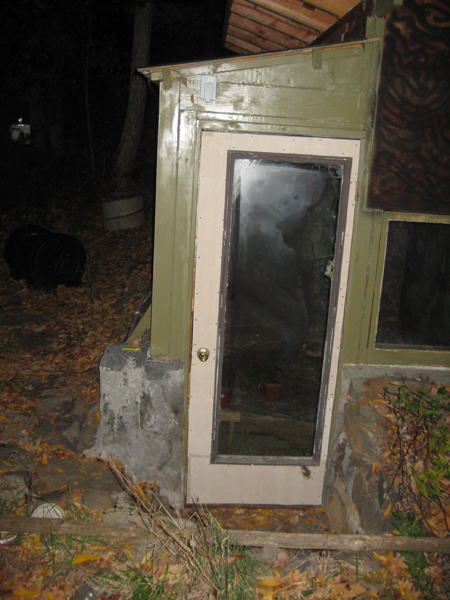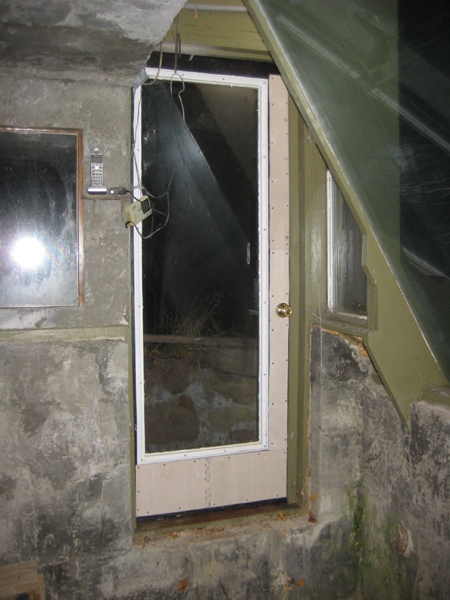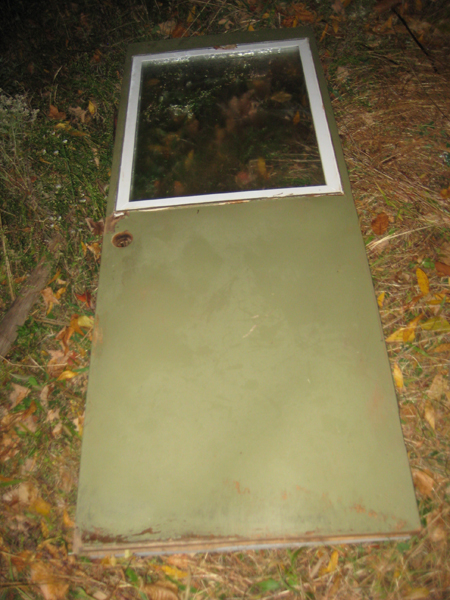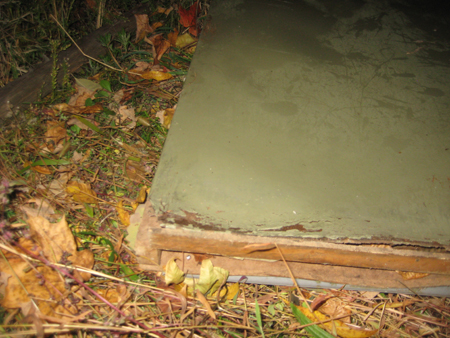|
|
|
new greenhouse door installed
Tuesday, October 19 2010
Since moving into the Shaque at my parents' place after college in 1991, a hot water dispenser has always been an important part of my office equipment. I drink black tea throughout the day for its caffeine (which is significant but at a low enough dosage to permit continuous drinking) and also to satisfy my oral compulsions. My first hot water dispensers were uninsulated multi-gallon tanks of the sort used to supply hot water at conferences. Here in Hurley I had one that I attempted to insulate. The problem with those, in addition to their horrible inefficiency, is that after a couple years they invariably spring leaks.
For the past three years I've been using a Chinese-made Sunbeam water dispenser, the kind that accepts standard five gallon bottles upside-down on top. I'd bought it at Home Depot and it hadn't been the cheapest one they'd sold, but it has been gradually falling apart since I bought it. I only use its hot water function, and about two years ago the hot water handle broke off, and I've had to use a specially-machined metal bar in its place. More recently, the hot water valve has become problematic, only dispensing water at an ineffectual trickle and sometimes leaking at a rate high enough to put puddles on the floor. In a word, it's junk, and it's always been junk. I know from my years in office environments that water dispensers can be made robust and reliable, though it's not clear where one goes to buy the better kind.
So the other day I did some research and ordered myself a Zojirushi Hot Water Dispenser. Insulated hot water pots are supposedly common in Asia, but they're generally difficult to find in American markets. (I've encountered this before, finding that my interests coincided with Japanese interests on small laptops and small keyboards many years before they became easily available here.) Today the Zojirushi Dispenser arrived and I set it up, making tea from it not too much later. Just having a device that reliably produces a constant flow of hot water without giving me carpal tunnel syndrome makes it worthwhile.
As for the old Sunbeam dispenser, I intend to disassemble it and hopefully retrofit it with new, robust plumbing. I'd augmented its insulation and it had actually been fairly energy-efficient and I'd like to get it working again if possible.
On the greenhouse door project, today I finished cladding it with Durock and installed it in the greenhouse. I hung it without its glass because it was much lighter and easier to maneuver that way. Once it was up, I drilled out holes for the doorknob hardware and installed the knob from the old greenhouse door. There isn't much of a roof overhang over the door, so rain had been able to get into that knob and its mechanism had become rather rusty. As for the old door, much of its cardboard-and-fibreboard structure had turned to a blackish substance resembling compost. It had been exposed to far more moisture than a closet door is expected to tolerate.
Later I had Gretchen help me install the window into the new door. This was the window I'd salvaged from a door that David had convinced me to buy at a yardsale some weeks ago. The window's plastic frame snapped together inside the hole I'd built for it, and from there it was a matter of tightening screws. It all fit together so well it was as if they were part of the same manufacturer's kit. The difference, though, was that it's impossible to a buy a door as rot-proof as the one I'd just built.
The salvaged window was covered with lots of paint from some shoddy paint job done many years ago. The paint had hardened so much that it was nearly impossible to scrape off with a razor until I softened it by daubing it with gasoline (a solvent I happened to have handy). Once I'd removed the paint, I saw that this salvaged window (an insulated glass panel) evidently had blown seals, allowing moisture in the space between the sheets of glass. I wouldn't have bought it had I noticed this, but for the purposes of the greenhouse it doesn't really matter. Besides, I built the greenhouse specifically as an application for three large patio door panes, all of which I knew to have blown seals at the outset.

New greenhouse door from the outside.

From the inside. The black is asphalt-covered framing I didn't feel the need to clad in Durock (which is grey).

The old door.

Detail of rot at the bottom of the old door after not quite two years.
For linking purposes this article's URL is:
http://asecular.com/blog.php?101019 feedback
previous | next |



